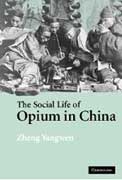Ok, ok, so perhaps the title is not the best thought our title in the world, but it certainly does have a ring to it, doesn’t it!
As I mentioned in a previous post, I had the pleasure of sampling two varieties of wildly different ‘Iron Buddha’ tea recently. Both of them came from the wonderful JING Tea, and both were highly commended by other reviewers. The two types were ‘Iron Buddha Oolong Tea’ and ‘Traditional Iron Buddha Oolong Tea’ (otherwise known as ‘Monkey Picked’ oolong). Both teas are sourced from China’s Fujian province.
The ‘Traditional’ variety was a variety I had never had the chance to try before, as it’s not all that common, and so I was incredibly excited. The name ‘monkey picked’ is not an indicator of animal cruelty, but instead traces back to the days when Buddhist monks would train the monkeys to pick the younest, freshest leaves from the tops of the wild tea plants, in order to make the finest teas. Ok, onto the reviews!
‘Traditional Iron Buddha’
Colour of the leaves: 7/10 (A little darker than the picture, and a little darker than I care for, but still a nice smoky colour)
Shape of the leaves: 7/10 (Nicely rolled, but I think perhaps some of them were poorly handled in transit, and were a little broken -thought this is not the fault of JING Tea, rather the postal company)
First infusion: 7/10 (A lovely colour, similar to other ‘Iron Buddha’ teas, but with a slightly more earthy colour. The taste had a more smoky aroma than other than other ‘Iron Buddha’ teas, which, while not entirely unpleasant, lacked a little something I so wanted this special tea to have.)
Subsequent infusions: 6.5/10 (Subsequent infusions maintained much of the same aroma, taste and ‘texture’ of the first infusion – which, again, was pleasant. But other ‘Iron Buddha’ teas I have tried tend to develop with further infusion, and there is a definite progression with them. The flavours tend to become more complex after the first couple of brewings, whereas I found this tea remained much the same.)
Aroma: 8/10 (The tea most definitely had a woody fragrance to it, less reminiscent of an ‘Iron Buddha’ tea, and more in-line with stronger oolongs, which was simply delightful. It was a beautifully Autumnal aroma, which most definitely made me think about falling leaves, and rainy days – in the best possible way. A wonderfully fragrant liquor, which perfectly fits the fall season.
Total: 35.5/50
‘Iron Buddha’
Colour of the leaves: 9.5/10 (The picture doesn’t do the leaves justice! They have a vibrant colour, a beautiful brown-green, simply glowing. A pure delight to look at, and are begging to be drunk)
Shape of the leaves: 7/10 (Again, beautifully rolled. Just carelessness on the part of the postman means that I’ve given a slightly disappointing score.)
First infusion: 9/10 (Words cannot describe quite how wonderful this tea is. Absolutely bursting with floral fragrance, that had all the depth and complexities I have come to expect of Tie Guanyin tea. The tea felt incredibly thick in the mouth, and gave a liquor that was positively gleaming with a jade green hue. The tea was at once warming, yet refreshing, light and summery. Quite simply one of the most wonderful Tie Guanyin’s available in the UK in terms of flavour)
Subsequent infusions: 9/10 (Subsequent infusions – unlike the Traditional variety, developed in complexity up to around the third or fourth steeping, with successive steepings poviding what felt like an entirely new experience.)
Aroma: 8.5/10 (Intense floral bouquet, with almost nutty overtones. Incredibly complex, combining the fragrances of all four seasons)
Total: 43/50




